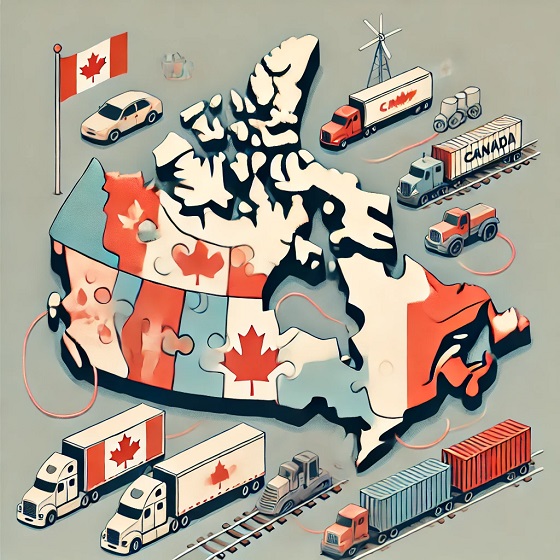Alberta
Update 16: Northwest Alberta wildfires (June 6 at 6 p.m.)

June 06, 2019
Weather conditions favourable for firefighters.
Wet, cooler weather has contributed to conditions that make it easier for fighting wildfires across the province. Rain continues to fall in many areas of Alberta while the High Level area experiences cool temperatures.
Approximately 4,800 evacuees remain displaced. Steen River and Trout Lake evacuees are now eligible for evacuation payments.
The following communities remain on evacuation alert:
- Keg River, Carcajou and all residents from the northern border of the County of Northern Lights to Township Road 922 (Notikewin Road)
- Hamlet of Sandy Lake
- Town of Slave Lake
- MD of Lesser Slave Lake, including Old Smith Highway, Mitsue, Poplar Lane, Fawcett Lake, Eben Road and Bayer Road
- Peerless Lake area of Peerless Trout First Nation
- Town of Manning and some surrounding areas
- Mackenzie County: everyone north and south of the Peace River from Township Road 1030 north to Township Road 1110, west of Range Road 120 to Highway 35 south and southeast of High Level, and east of Range Road 180 (Blue Hills Road)
Mandatory evacuations remain in place for:
- Paddle Prairie Metis Settlement
- Some areas of Mackenzie County: west of Blues Creek, north of Highway 697, west of Blue Hills Road (RR 180) and north of Township Road 1030 and La Crete Ferry Campground to the Peace River.
- Steen River
- The Trout Lake area of Peerless Trout First Nation
- Bigstone Cree Nation
- Wabasca No. 166
- Parts of the MD of Opportunity No. 17
- Hamlet of Wabasca – Desmarais
- Hamlet of Sandy Lake
- Chipewyan Lake Village
Current situation:
- Chuckegg Creek wildfire, southwest of High Level, is about 275,985 hectares.
- Jackpot Creek wildfire, approximately 11 kilometres north of Lutose, is about 28,100 hectares.
- McMillan Wildfire Complex, southwest of Bigstone Cree Nation, is more than 248,000 hectares.
- Battle Wildfire Complex in Peace River is about 56,200 hectares.
- There are more than 2,100 wildland and structural firefighters and staff, approximately 223 helicopters and 28 air tankers and heavy equipment on these fires.
- Check Alberta Emergency Alerts for more detailed and frequently updated information.
- People driving in fire-affected areas should carry enough fuel, as it may not be readily available.
Visit emergency.alberta.ca for detailed and frequently updated information.
Air quality
- Smoke is causing poor air quality and reducing visibility in parts of the province.
- Much of northwestern Alberta is under a special air quality statement.
- Individuals may experience symptoms, such as increased coughing, throat irritation, headaches or shortness of breath. Children, seniors and those with cardiovascular or lung disease, such as asthma, are especially at risk.
- If you experience breathing difficulties, find an indoor place that’s cool and ventilated.
- Alberta Wildfire recommends checking FireSmoke.ca to find out where the smoke is coming from.
Financial supports
- Evacuees should check alberta.ca/emergency for updates on evacuation payment eligibility.
- Evacuees in need of financial assistance for immediate needs can apply for an Income Support program emergency needs allowance. This benefit may cover your accommodation, clothing and other urgent needs. Please call 1-877-644-9992 for more information.
- You may qualify for the evacuation payment if you:
- were living, working or vacationing in the affected area
- were forced to leave due to an evacuation order
- paid for most of your costs to evacuate
- were forced to leave your residence (primary, working or vacationing) due to a mandatory evacuation order – current communities include:
- High Level
- Paddle Prairie Metis Settlement
- Bushe River
- Chateh
- Meander River
- Wabasca-Desmarais
- Bigstone Cree Nation 166 A, B, C and D
- Sandy Lake
- Chipewyan Lake Village
- Keg River
- Carcajou
- Northern border of the County of Northern Lights to Township Road 922 (Notikewin Road)
- Steen River
- Trout Lake
- Albertans who qualify will receive $1,250 and $500 for each dependent child under 18 living in the same home when the evacuation order was given.
- Application methods:
- Apply online through the MyAlberta Evacuation Payment application using a smart-phone, device or desktop. Interac e-transfers may take 24 hours to process.
- If you’re in the Edmonton area and from an eligible community, please visit the Edmonton Expo Centre, 7515 118 Ave before 9 p.m. on Thursday, June 6 or between 8:30 a.m. and noon on Friday, June 7.
- Parking is free for evacuees. Let the parking attendant know the purpose of your visit.
- You can also apply in-person at Calling Lake Community Complex, Central Drive and 1 Street before 8 p.m. on Thursday, June 6 if you’re from:
- Wabasca-Desmarais
- Carcajou
- Sandy Lake
- Chipewyan Lake Village
- Keg River
- Bigstone Cree Nation 166 A, B, C and D
- Northern border of the County of Northern Lights to Township Road 922 (Notikewin Road)
- If you’re not in the Edmonton or Calling Lake areas, contact 310-4455 to find the nearest payment distribution centre.
- Photo identification
- Proof of residence or presence in the community
- Identification for dependent children if claiming for them
- If you are visiting a payment distribution centre, please bring:
- More than 10,300 individuals have received evacuee support, and more than $10.4 million has been distributed.
Reception and call centres
- All evacuees should register with an evacuation reception centre, even if you’ve found alternate accommodations.
- Some reception centres have been demobilized. This means evacuees are able to contact the centres by phone. If there is a need, staff will assist them on an individual basis:
- Grande Prairie – 780-567-5587
- Reception centres are open at:
- Peace River Misery Mountain Ski Hill (10408 89 Street)
- Calling Lake Recreation Centre (2870 Central Drive)
- Back Lakes Arena (249 Red Earth)
- Evacuation reception centre hours can be found at emergency.alberta.ca.
- The Alberta Government’s call centre will be open from 8 a.m. to 8 p.m. until Friday, June 7 at 310-4455.
Highway updates
- To stay informed on all road closures due to the wildfires, visit 511.Alberta.ca or download the mobile app.
Insurance information
- Most home and tenant insurance policies provide coverage for living expenses during an evacuation.
- Evacuees should retain all of their receipts for food, accommodation and other related expenses to provide to their insurer.
- Albertans can contact the Insurance Bureau of Canada at 1-844-227-5422 or by email at [email protected]. Information about insurance coverage is available online at ibc.ca/ab/disaster/alberta-wildfire.
Justice and legal matters
- High Level Court matters will resume in High Level on Monday, June 10 at 8:15 a.m.
- Community Corrections and Release will resume operations out of High Level at 8:15 a.m. on Friday, June 7.
- Chateh Court matters will be heard in High Level Court until further notice. Please contact the High Level Court at 780-926-3715 for inquiries.
- Fort Vermilion Court matters will resume immediately, as scheduled. Please call 780-926-3715 for inquiries.
- Wabasca Desmarais matters will continue to be held in High Prairie until further notice. Please contact the High Prairie Court at 780-523-6600 regarding any matters scheduled.
- If you have an appointment with a probation officer in an evacuated area, report to the community corrections office nearest you. Please call 780-427-3109 (to call toll-free, first dial 310-0000) for information.
- If you are an intermittent server in an evacuated area, call the Peace River Correctional Centre at 780-624-5480 (to call toll-free, first dial 310-0000).
Education
- The schools of Fort Vermilion School Division will remain closed for the remainder of the school year. Students wishing to write a diploma exam, Grade 6 or Grade 9 provincial achievement tests should make arrangements with the Fort Vermilion School Division. For further information visit: fvsd.ab.ca.
- School officials in fire-impacted areas will address the impacts of disruption on the academic program and school year. Students or their guardians should watch for online or direct communications from local school authorities about specific changes.
Provincial park closures
- Lesser Slave Lake Provincial Park trails and day-use areas, including the Boreal Centre for Bird Conservation, are open. Campgrounds remain closed.
- Twin Lakes Provincial Recreation Area, Moose Lake Provincial Park and Notikewin Provincial Park are closed.
- Calling Lake Provincial Park campground is closed to accommodate evacuees from the MD of Opportunity. Any campground reservations will be refunded.
Boil water advisory
- A boil water advisory is in place for Meander River (Dene Tha’ First Nation).
Health
- Mental health support is available by calling Alberta’s 24-hour help line at 1-877-303-2642, the Addiction Helpline at 1-866-332-2322, or Health Link at 811.
- Alberta Health Services is providing support to the reception centres. These supports include addiction and mental health, Indigenous health liaisons, nursing, emergency medical services, public health and home care.
- The Northwest Health Centre in High Level is open, with all emergency, laboratory, X-ray, mental health and community health departments open.
- Alberta Health Services will be providing enhanced addiction and mental health services to help residents in High Level following the evacuation.
- New, temporary walk-in services for individuals experiencing addiction and mental health concerns are available seven days a week from 11 a.m. to 7 p.m. at the Mental Health Clinic at Northwest Health Centre in High Level. Scheduled visits with new and existing clients will resume on Monday, June 10, from 8 a.m. to 4:30 p.m. For more information, please call the clinic directly at 780-841-3229.
- Alberta Health Services has relocated acute patients and continuing care residents from La Crete and Fort Vermilion to health facilities in Edmonton and surrounding communities.
- The emergency department at St. Theresa General Hospital in Fort Vermilion remains open.
Pets and livestock
- High Level animal control has collected household pets that have been left behind. For questions regarding your pets, please call 780-926-2201.
- For evacuees in the Wabasca area, please fill out an online form on the Alberta Animal Disaster Response Facebook group, or text 403-869-4964 and provide your name, contact number, number of animals missing, where they were last seen, and a brief description of your pet.
- The County of Northern Lights will allow residents to enter property to look after livestock between 7 a.m. and 10 p.m. Residents must first go to the county office to register for the temporary access pass.
Electricity and natural gas billing
- High Level and area residential, farm, irrigation and small commercial electricity and natural gas customers affected by the evacuation will not be billed for the period covered by the order.
Donations and volunteers
- High Level is not accepting donations or volunteers at this time.
- The Town of Slave Lake has set up an online form for offers.
- Check the Mackenzie County Facebook page for an up-to-date list of donations needed and drop-off locations.
Canada Post
Mail service has been suspended in:
- High Level, Meander River, Chateh, Paddle Prairie, Keg River, Wabasca, Notikewin, Hotchkiss, Trout Lake
- High Level evacuees can pick up mail from the Slave Lake Post Office
- Chateh evacuees can pick up mail at the Fort Vermilion Post Office
- Meander River evacuees can pick up mail at the La Crete Post Office
Mail service has been restored in:
- Fort Vermilion, La Crete, Rainbow Lake, Zama City
If you require urgent access to critical items, such as medications and passports, please call 1-800-267-1177. You may be able to arrange for pick up at the Slave Lake Post Office (100 2 Street NE).
Mail will be held at the Edmonton depot until mail service resumes.
- Check the Canada Post website for updates.
Income Support, Alberta Supports and AISH
- Evacuees receiving the Assured Income for the Severely Handicapped or the Income Support program by cheque rather than electronic deposit can pick up their cheque at their nearest Alberta Supports Centres.
- If you are in La Crete, you can pick up your cheque at the local reception centre. If you receive your benefits via direct deposit, your payment will be deposited as usual.
- For information on child intervention and child care, call 1-800-638-0715.
- Persons with developmental disabilities, their families or contracted service providers can call the nearest Alberta Supports Centre for assistance.
- For additional information on social benefits, or to find a list of Alberta Supports Centres, call 1-877-644-9992 provincewide between 7:30 a.m. and 8 p.m., Monday to Friday.
- Employment insurance: evacuees can visit Service Canada online to apply at www.canada.ca/en/services/benefits/ei.html. Use code 4812014812201900.
Health card, driver’s licences, ID cards, birth certificate
- To get a replacement Health Care Insurance Card call 780-427-1432 or toll free at 310-0000 and then 780-427-1432 when prompted. Your Alberta Personal Health Card can be mailed to a temporary address.
- If driver’s licences, identification cards, and/or birth certificates were left behind during the evacuation, replacement cards and certificates can be ordered free of charge at a registry agent.
Public information
- You can call 310-4455 for more information.
Related information
Alberta
Low oil prices could have big consequences for Alberta’s finances

From the Fraser Institute
By Tegan Hill
Amid the tariff war, the price of West Texas Intermediate oil—a common benchmark—recently dropped below US$60 per barrel. Given every $1 drop in oil prices is an estimated $750 million hit to provincial revenues, if oil prices remain low for long, there could be big implications for Alberta’s budget.
The Smith government already projects a $5.2 billion budget deficit in 2025/26 with continued deficits over the following two years. This year’s deficit is based on oil prices averaging US$68.00 per barrel. While the budget does include a $4 billion “contingency” for unforeseen events, given the economic and fiscal impact of Trump’s tariffs, it could quickly be eaten up.
Budget deficits come with costs for Albertans, who will already pay a projected $600 each in provincial government debt interest in 2025/26. That’s money that could have gone towards health care and education, or even tax relief.
Unfortunately, this is all part of the resource revenue rollercoaster that’s are all too familiar to Albertans.
Resource revenue (including oil and gas royalties) is inherently volatile. In the last 10 years alone, it has been as high as $25.2 billion in 2022/23 and as low as $2.8 billion in 2015/16. The provincial government typically enjoys budget surpluses—and increases government spending—when oil prices and resource revenue is relatively high, but is thrown into deficits when resource revenues inevitably fall.
Fortunately, the Smith government can mitigate this volatility.
The key is limiting the level of resource revenue included in the budget to a set stable amount. Any resource revenue above that stable amount is automatically saved in a rainy-day fund to be withdrawn to maintain that stable amount in the budget during years of relatively low resource revenue. The logic is simple: save during the good times so you can weather the storm during bad times.
Indeed, if the Smith government had created a rainy-day account in 2023, for example, it could have already built up a sizeable fund to help stabilize the budget when resource revenue declines. While the Smith government has deposited some money in the Heritage Fund in recent years, it has not created a dedicated rainy-day account or introduced a similar mechanism to help stabilize provincial finances.
Limiting the amount of resource revenue in the budget, particularly during times of relatively high resource revenue, also tempers demand for higher spending, which is only fiscally sustainable with permanently high resource revenues. In other words, if the government creates a rainy-day account, spending would become more closely align with stable ongoing levels of revenue.
And it’s not too late. To end the boom-bust cycle and finally help stabilize provincial finances, the Smith government should create a rainy-day account.
Alberta
Governments in Alberta should spur homebuilding amid population explosion

From the Fraser Institute
By Tegan Hill and Austin Thompson
In 2024, construction started on 47,827 housing units—the most since 48,336 units in 2007 when population growth was less than half of what it was in 2024.
Alberta has long been viewed as an oasis in Canada’s overheated housing market—a refuge for Canadians priced out of high-cost centres such as Vancouver and Toronto. But the oasis is starting to dry up. House prices and rents in the province have spiked by about one-third since the start of the pandemic. According to a recent Maru poll, more than 70 per cent of Calgarians and Edmontonians doubt they will ever be able to afford a home in their city. Which raises the question: how much longer can this go on?
Alberta’s housing affordability problem reflects a simple reality—not enough homes have been built to accommodate the province’s growing population. The result? More Albertans competing for the same homes and rental units, pushing prices higher.
Population growth has always been volatile in Alberta, but the recent surge, fuelled by record levels of immigration, is unprecedented. Alberta has set new population growth records every year since 2022, culminating in the largest-ever increase of 186,704 new residents in 2024—nearly 70 per cent more than the largest pre-pandemic increase in 2013.
Homebuilding has increased, but not enough to keep pace with the rise in population. In 2024, construction started on 47,827 housing units—the most since 48,336 units in 2007 when population growth was less than half of what it was in 2024.
Moreover, from 1972 to 2019, Alberta added 2.1 new residents (on average) for every housing unit started compared to 3.9 new residents for every housing unit started in 2024. Put differently, today nearly twice as many new residents are potentially competing for each new home compared to historical norms.
While Alberta attracts more Canadians from other provinces than any other province, federal immigration and residency policies drive Alberta’s population growth. So while the provincial government has little control over its population growth, provincial and municipal governments can affect the pace of homebuilding.
For example, recent provincial amendments to the city charters in Calgary and Edmonton have helped standardize building codes, which should minimize cost and complexity for builders who operate across different jurisdictions. Municipal zoning reforms in Calgary, Edmonton and Red Deer have made it easier to build higher-density housing, and Lethbridge and Medicine Hat may soon follow suit. These changes should make it easier and faster to build homes, helping Alberta maintain some of the least restrictive building rules and quickest approval timelines in Canada.
There is, however, room for improvement. Policymakers at both the provincial and municipal level should streamline rules for building, reduce regulatory uncertainty and development costs, and shorten timelines for permit approvals. Calgary, for instance, imposes fees on developers to fund a wide array of public infrastructure—including roads, sewers, libraries, even buses—while Edmonton currently only imposes fees to fund the construction of new firehalls.
It’s difficult to say how long Alberta’s housing affordability woes will endure, but the situation is unlikely to improve unless homebuilding increases, spurred by government policies that facilitate more development.
-

 2025 Federal Election2 days ago
2025 Federal Election2 days agoPoilievre Campaigning To Build A Canadian Economic Fortress
-

 Alberta13 hours ago
Alberta13 hours agoGovernments in Alberta should spur homebuilding amid population explosion
-

 conflict2 days ago
conflict2 days agoTrump tells Zelensky: Accept peace or risk ‘losing the whole country’
-

 conflict23 hours ago
conflict23 hours agoWhy are the globalists so opposed to Trump’s efforts to make peace in Ukraine?
-

 2025 Federal Election16 hours ago
2025 Federal Election16 hours agoCarney’s budget is worse than Trudeau’s
-

 International12 hours ago
International12 hours agoHistory in the making? Trump, Zelensky hold meeting about Ukraine war in Vatican ahead of Francis’ funeral
-

 Alberta12 hours ago
Alberta12 hours agoLow oil prices could have big consequences for Alberta’s finances
-

 Business12 hours ago
Business12 hours agoIt Took Trump To Get Canada Serious About Free Trade With Itself







